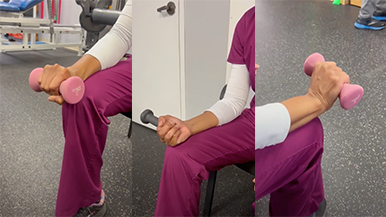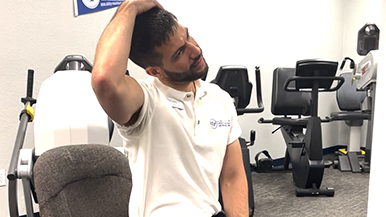The Importance of Lifting Properly at the Gym
Going to the gym is supposed to help you get in shape and make you healthier, right?
In fact, the Department of Health and Human Services recommends that healthy adults perform at least 150 minutes of moderate aerobic activity a week and strength training exercises at least twice a week.
 Still, despite participating in weightlifting to grow stronger, injuries at the gym still occur (and occur often). Muscles can be overused causing tendonitis or strains, fractures or sprains can occur. Preventing these injuries can sometimes be prevented by perfecting your lifting technique.
Still, despite participating in weightlifting to grow stronger, injuries at the gym still occur (and occur often). Muscles can be overused causing tendonitis or strains, fractures or sprains can occur. Preventing these injuries can sometimes be prevented by perfecting your lifting technique.
Here are five ways to improve your weightlifting technique at the gym:
- Lift an appropriate amount of weight. Pacing yourself at the gym can be critical. The Office of Disease Prevention and Health Promotion advises that you increase your physical activity overtime because injuries can occur when when there is a gap between a person’s usual level of activity and a new level of activity. This includes pacing the amount of weight you lift. Start with a weight you can comfortably lift 12 to 15 times. As you get stronger, gradually increase the amount of weight you lift.
- Use the proper form for each exercise. Not only does using the proper form keep you from getting hurt, it can also produce better results. Improper form can result in sprains, strains and fractures. This includes when you pick up weights off the rack or return them to the rack. For example, when performing a chest press, the shoulders should be back and down. Also, you should refrain from arching your back or rocking your body to get weights up.
- Use slow and controlled movements. A slow repetition should take about 10 seconds. This allows you to use your muscles to lift the weights and not momentum. Move your weights through a full range of motion.
- Avoid locking your knees. When the knee is locked, the stress is placed onto the knee and not on the supporting muscles. This causes the soft tissue in the knee to become damaged and increases the risk of knee injury.
- Breathe. While this sounds like an obvious tip, it is vital. Some people are tempted to hold their breath, but this can be dangerous and increases their blood pressure. When lifting weights, breathe out as you lift the weight and breathe in through your nose as you lower the weight.
Weightlifting can improve strength and muscle tone, help you lose fat and improve your bone density. In order to achieve these benefits, you have to implementing the proper technique. Not practicing these techniques can lead to injury and keep you from achieving your fitness goals.



